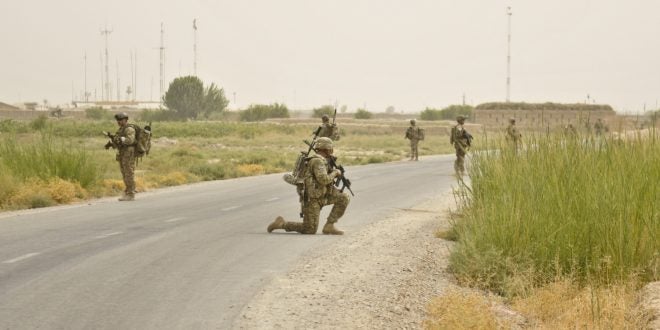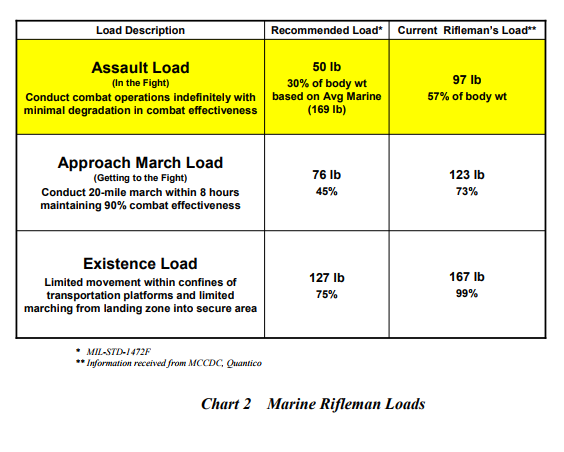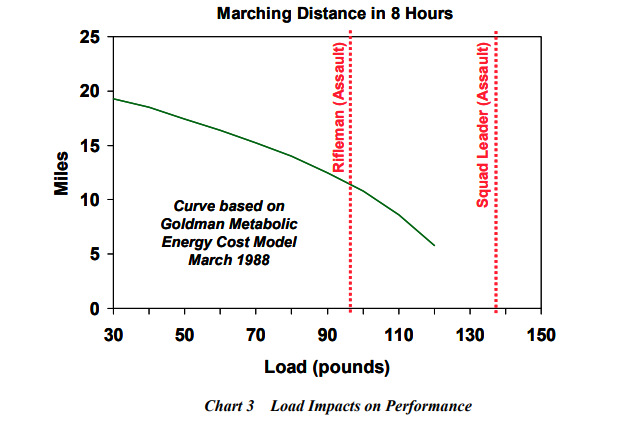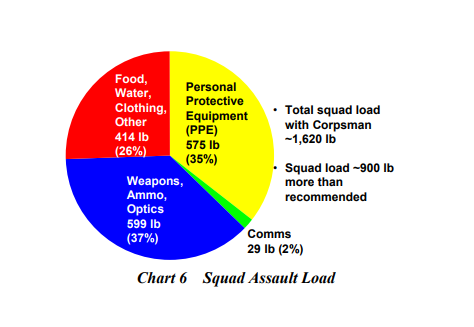In the comments section of my recent article Are We Gearing Up to Lose the Next War? Overmatch, Part 2: Bullets & Backbreakers, two of TFB’s readers shared documents that help us describe the problem of the modern soldier and Marine’s load. The first, from reader cwolf, is a 2007 report by the Naval Research Advisory Committee entitled Lightening the Load. It is available on Slideshare here, or for download here. The second, from ReanerF, is a GAO report on personal protective equipment (PPE, i.e. body armor) from March of this year. In this brief post, we’ll be taking a glance at these reports, which I highly recommend interested readers make time to read in full.
Lightening the Load describes the problem of the Infantry’s (specifically: the Marine’s) increasing load in great detail. It outlines not only how much the Marine is carrying into combat, but the proper approaches to addressing the problem. The paper recommend approaching the Marine Rifle Squad as the “unit” of the system to be addressed, rather than the individual (an approach I agree with, and might even recommend extending to the platoon in the case of the Army due to their differentiated squads). It breaks possible solutions into three different approaches: lightening the load, transferring the load, and enhancing human performance, and notes that of the three, the last is the least effective (although still important). Much, much more detail is presented in the paper, and I do recommend reading it.
The GAO report helps emphasize one conclusion from the NRAC study, which is that the dramatic increase in soldier load can be attributed largely to the addition of heavy body armor. It also gives us an updated figure for the modern soldier’s average load, that being approximately 119 pounds (117 for the Marine’s average load). The report offers an in-depth look into the current and near-future state of body armor and other PPE, and is, like the NRAC report, well worth reading.
Thanks to cwolf and ReanerF for the tips!
 Your Privacy Choices
Your Privacy Choices



